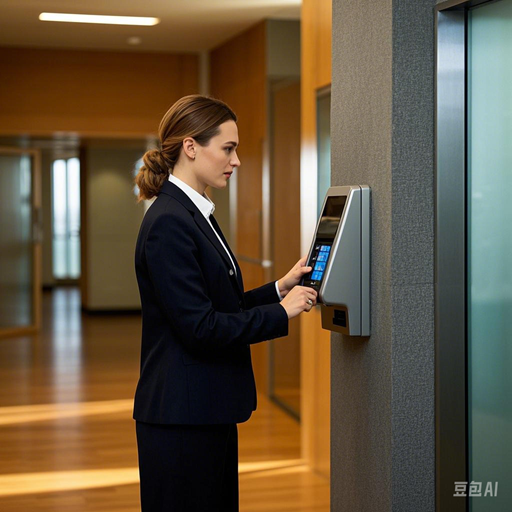Which Type of Time and Attendance System is Best for an Accounting Firm?

Tracking time and attendance is essential for accounting firms. Billable hours are the foundation of profitability, and an efficient system can significantly impact productivity and growth. However, choosing the right solution can be overwhelming, given the number of options available.
In this article, we'll explore the key features to look for in a time and attendance system, compare various options, and help you determine the best fit for your accounting firm. By the end, you'll have actionable insights to make an informed decision.
Key Features to Look for in a Time and Attendance System
For accounting firms, precision and adaptability are critical. Here are the must-have features to prioritize:
- Accurate Time Tracking: Ability to track time in increments (e.g., 6 minutes) for precise billing.
- Project and Client Tracking: Tag time entries to specific projects or clients for better reporting.
- Real-Time Reporting: Gain insights into billable hours, staff productivity, and project profitability.
- Mobile Accessibility: Ensure staff can log time on the go via smartphones or tablets.
- Payroll Integration: Automate payroll processing to eliminate manual errors.
- Overtime and PTO Management: Automatically flag overtime and simplify time-off requests and approvals.
- Access Controls: Restrict access to sensitive data based on roles.
- Ease of Use: The system should be intuitive, requiring minimal training to adopt.
The right system not only tracks hours but also automates administrative tasks, reduces errors, and provides actionable insights to improve operations.
Comparing Time and Attendance Systems
Below, we’ll evaluate four common types of time and attendance systems: paper-based, spreadsheet-based, standalone software, and cloud-based solutions.
1. Paper-Based Timesheets
While paper timesheets may have been the norm decades ago, they are now largely outdated.
- Pros:
- Simple and low upfront cost.
- Easy for staff to understand.
- Cons:
- Prone to calculation errors and data loss.
- No automation—requires significant manual effort.
- Lacks integration, mobile access, and reporting capabilities.
Verdict: Paper-based systems are inefficient and unsuitable for modern accounting firms.
2. Spreadsheet-Based Time Tracking
Spreadsheets (e.g., Microsoft Excel or Google Sheets) are a step up from paper-based systems but come with their own limitations.
- Pros:
- Familiar interface with customizable fields.
- Basic calculations and sharing options available.
- Cons:
- Tedious manual data entry and reconciliation.
- No real-time tracking or automation.
- Lacks access controls and mobile capabilities.
Verdict: Suitable for very small teams but unscalable for growing accounting firms.
3. Standalone Software
Traditional standalone time tracking software offers robust features but lacks the flexibility of modern solutions.
- Pros:
- Robust tracking, reporting, and scheduling features.
- Customizable fields and integration with payroll systems.
- Strong access controls and permissions.
- Cons:
- Requires installation and internal IT management.
- Limited accessibility—no web or mobile integration.
- High upfront costs and licensing fees.
Verdict: Standalone systems can work for firms with specific needs but are less appealing compared to cloud-based options.
4. Cloud-Based Time and Attendance Systems
Cloud-based solutions are the gold standard for modern accounting firms, offering mobility, scalability, and automation.
- Pros:
- Accessible from anywhere via web and mobile apps.
- Real-time tracking, reporting, and insights.
- Automates overtime management, PTO approvals, and payroll integration.
- Scales easily as your firm grows.
- Regular updates and pay-as-you-go pricing.
- Cons:
- Subscription fees.
- Dependent on internet connectivity.
Verdict: Cloud-based systems are ideal for most accounting firms due to their flexibility, automation, and cost-effectiveness.
Recommendation
For most accounting firms, a cloud-based time and attendance system is the best choice. Its ability to streamline processes, provide real-time insights, and integrate with payroll and billing systems makes it a valuable investment. While the upfront costs may seem higher than traditional options, the long-term benefits in productivity and accuracy far outweigh the expense.
When selecting a system, involve key stakeholders (e.g., managers and staff) to identify your firm's specific needs. Take advantage of free trials or demos offered by vendors to ensure the system aligns with your workflows.
Conclusion
An effective time and attendance system is no longer optional for accounting firms—it’s essential. By automating processes, reducing errors, and providing actionable insights, the right system helps firms maximize billable hours and drive growth.
Cloud-based solutions are the most versatile and efficient option for modern firms. While they require an ongoing investment, the time saved and revenue recouped make them well worth it.
Take the time to evaluate your firm’s needs, involve your team in the decision-making process, and test multiple systems before committing. With the right time tracking tool in place, your firm can boost productivity, improve compliance, and focus on delivering value to clients.